



Ajwain, known as Bishop’s weed, Indian Borage and Carom seeds in English is a very common ingredient in every Indian kitchen.
The name of Ajwain seeds in various Indian languages are as follows.
(1) Hindi – Ajwain
(2) Marathi – Ova
(3) Tamil – Omam
(4) GSB Konkani – Ovo
(5) Kannada – Ajvain
(6) Tulu – Oam
The name of Ajwain leaves in various Indian languages are as follows.
(1) Hindi – Ajwain ka patta
(2) Marathi – Ova paan
(3) Tamil – Karpooravalli, Omavalli
(4) GSB Konkani – Sambarballi
(5) Kannada – Doddapatre
(6) Tulu – Sambarballi
Scientific / Botanic Name: Trachyspermum ammi
Plant family : Apiaceae (or Umbelliferae)
They are used for adding distinct flavour and aroma in various Indian recipes like curries, drinks and parathas inspite of their bitter and pungent taste.
The Ajwain leaves and the seed like fruit, often mistakenly known as Carom seeds / Ajwain of the Ajwain plant are edible. We know about the use of the carom seeds, but many people don’t know that the leaves can also be consumed by preparing a variety of recipes using it. The leaves are broad, succulent, tender and soft with an astringent taste from the juice when it is chewed raw. They have a layer of very fine and soft hair on their surface.
Uses and benefits of Ajwain leaves
(1) To cure cold and cough
(2) Used to make fritters / pakoras, a tea time snack
(3) Used to make chutneys and dips, raita and salads and healthy juices
(4) Used to cure stomach pain instantly and for curing indigestion
(5) They are also used to increase appetite, especially in children.
(6) It is used in Ayurveda to treat various disorders
This herb plant is cultivated in India and Middle East.
Ajwain plant will grow in any type of soil, but prefers more alkaline soil. It needs only sunlight and regular watering for it to grow and does not need too much of organic material once in the ground. The Ajwain plant is perennial and can be grown indoor in a pot and here is the picture of one grown in my home balcony.

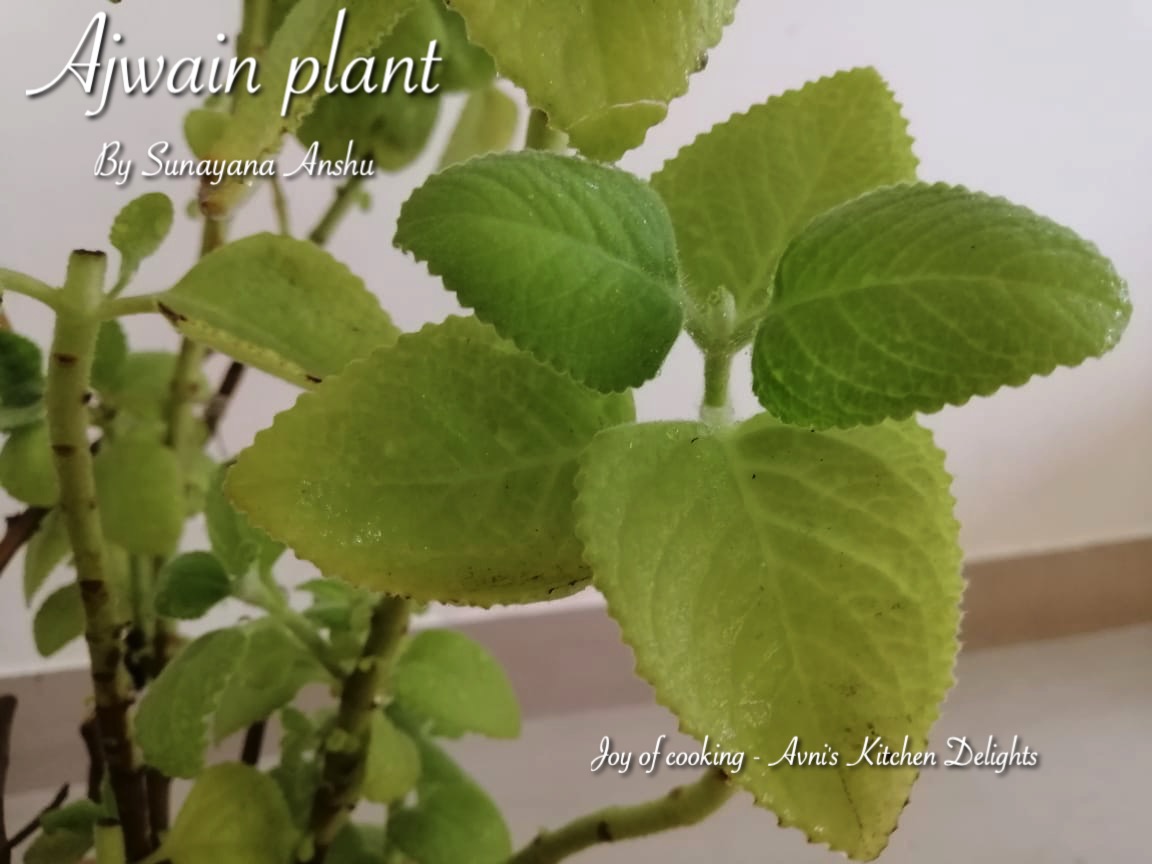
Here is the picture of the Ajwain leaves picked from my plant.
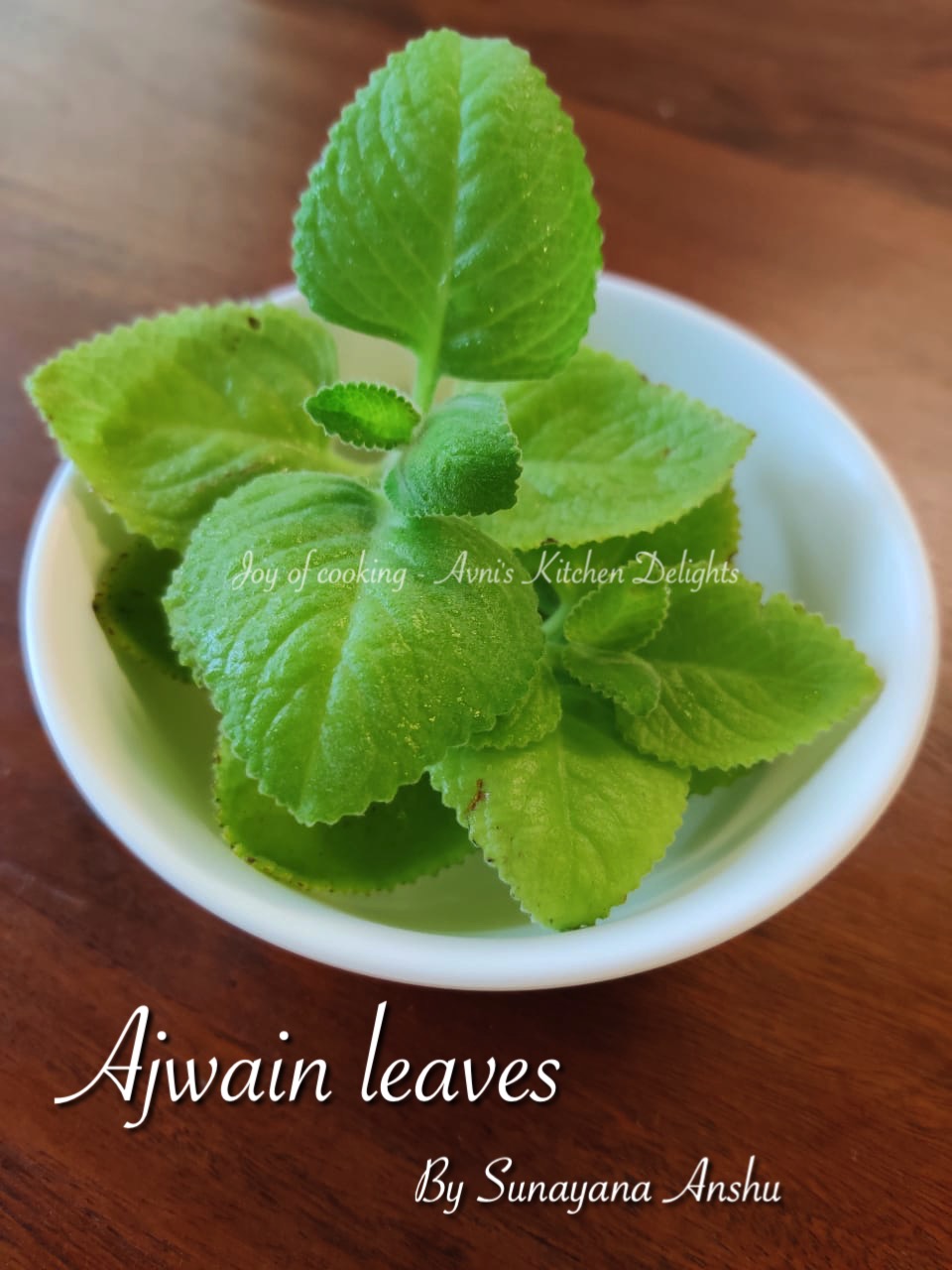
I used few leaves to prepare Ajwain chutney. To be precise, I used the entire bunch that is shown in the above picture.
Today we are going to learn how to prepare Ajwain chutney.
Ingredients required are as follows.
INGREDIENTS :
(1) 15 Ajwain leaves along with the attached stem, chopped
(2) Dried Coconut (Half) called Khobara, grated. This is what I had and I used it. You may use freshly grated coconut.
(3) 2 whole green chillies, chopped
(4) 1 small marble sized tamarind piece
(5) 15 black peppers (about half teaspoon)
(6) Half teaspoon of Cumin seeds / Jeera
(7) Salt as per taste
For tempering:
(1) 2 tablespoons of Ghee OR Coconut oil OR any refined oil
(2) Half teaspoon of Mustard seeds / Rai
(3) Few Curry leaves
These ingredients will yield chutney enough for 2-4 persons.
Here is the picture of ingredients used.

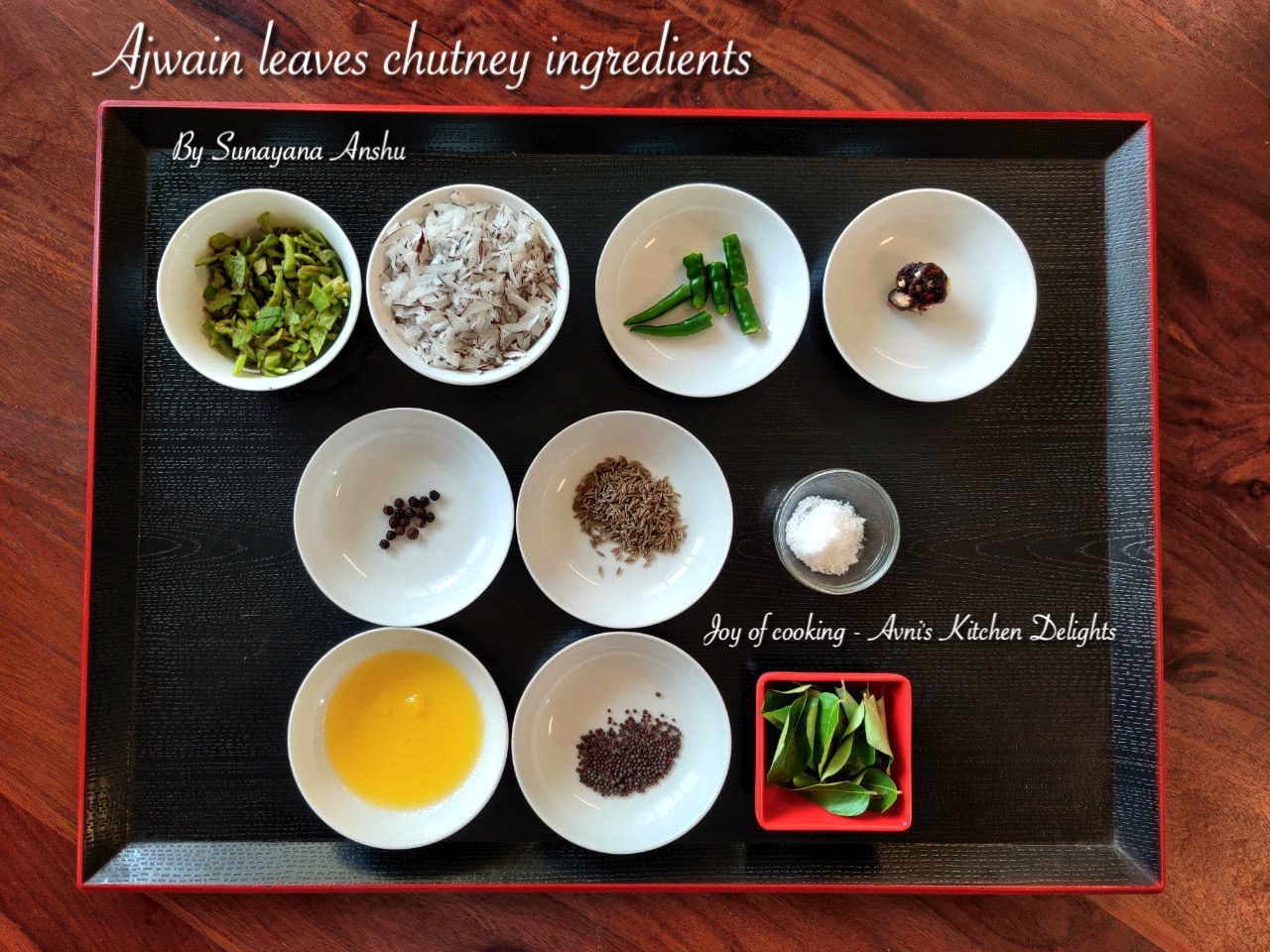
METHOD :
(1) Take 2 tablespoon of ghee or coconut oil or any refined oil in a kadhai and heat it on a low flame. I took ghee.

(2) Once warm, add Cumin seeds and allow it to splutter.

(3) Add Black pepper.

(4) Immediately add chopped green chillies.

Saute for few seconds.

(5) Add chopped Ajwain leaves and saute for few seconds.



Here is the video clip showing sauteing of the Ajwain leaves.
(6) Also add grated dried coconut and saute for for 2 minutes.


Here is the video showing the sauteing of grated dried coconut along with Ajwain leaves.
Turn off the gas flame and allow the mixture to cool.
(7) Take the mixture in a jar of the mixer grinder. Add a marble sized tamarind piece and salt as required. Add 20-30 ml of water and grind the mixture into a smooth paste. Our chutney is ready (Without tempering).






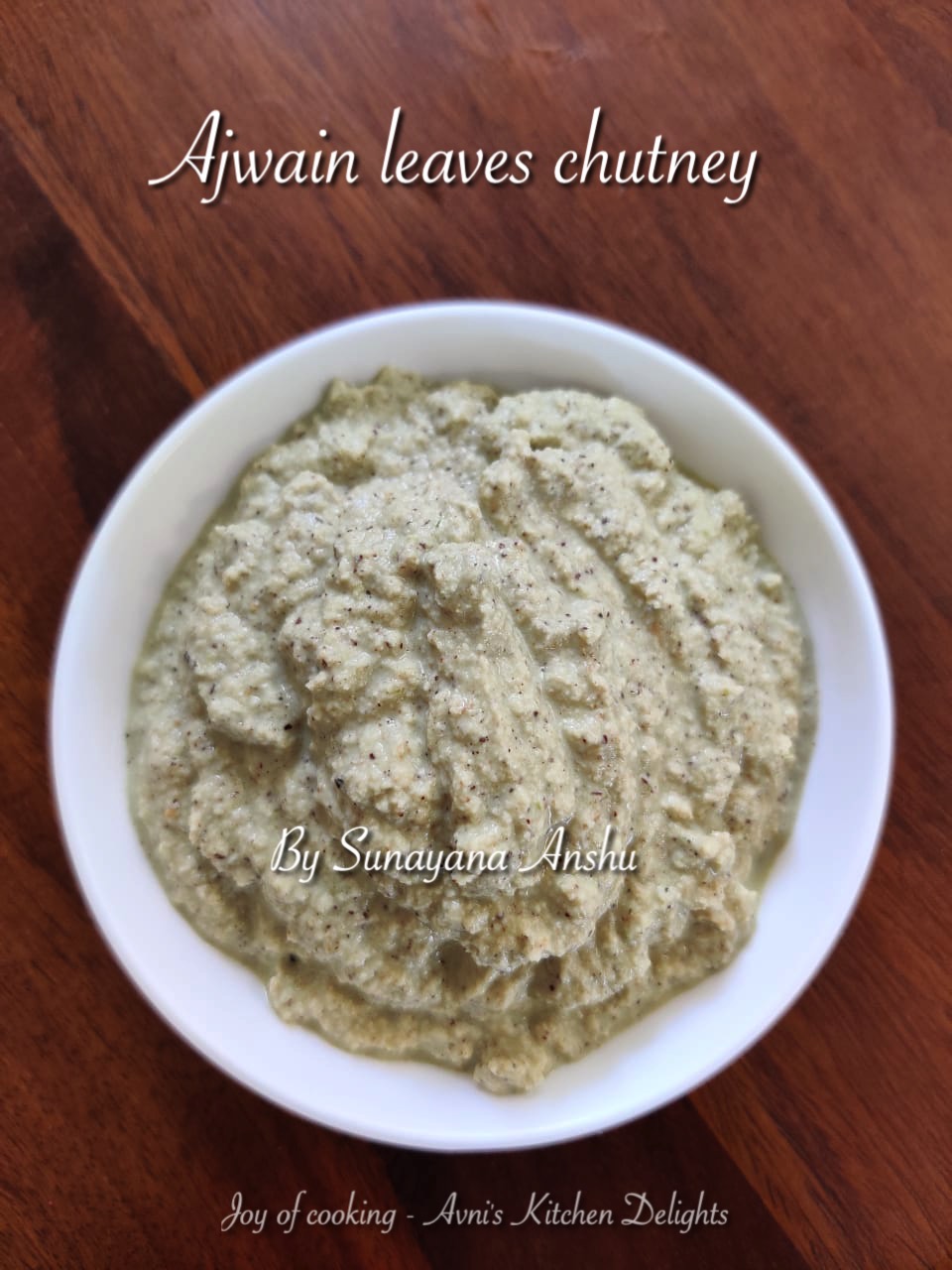
(8) Heat 2 tablespoon of ghee / oil in the same kadhai or in a tempering ladle. Add half teaspoon of Mustard seeds / Rai and allow it to splutter. Add few chopped curry leaves and immediately turn off the gas flame.



(9) Add the tempering to the chutney.

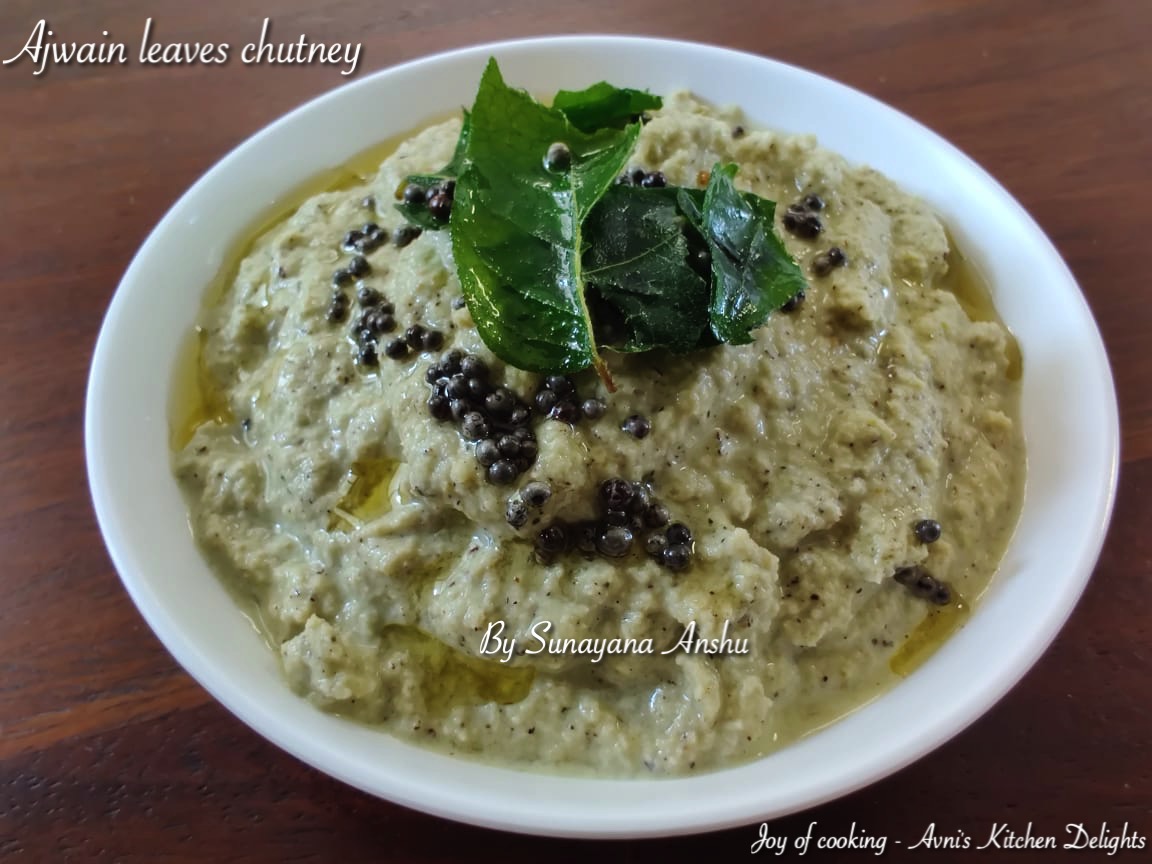
(10) Mix the chutney with the tempering very well.

(11) Garnish the chutney with Ajwain leaves.


(12) This Ajwain chutney can be served with Dosas and Idlis. I had it with Moong dal dosa as shown.
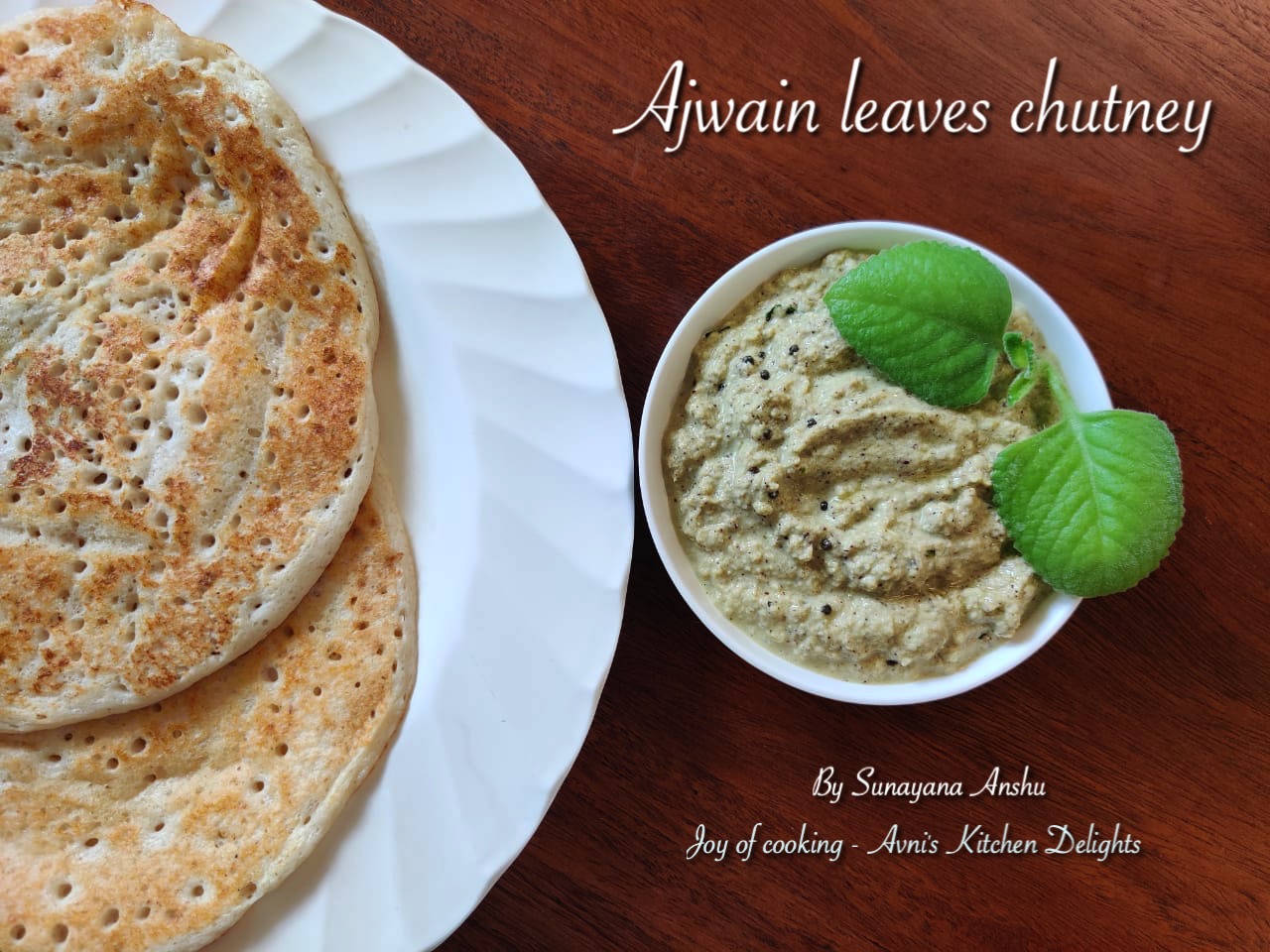
The Moong dal dosa recipe can be followed from my blog from the link given below. Please click…
You may serve this chutney with any kind of dosa given in my blog under the South Indian Dishes category.
Note : Add number of Ajwain leaves depending on the flavour required. I have added freshly picked up small and medium sized leaves. So I have added 15 leaves. You may first add few leaves and check the taste while grinding. If you feel the need of more leaves, you may add more and thereby adjust the flavour.
The Ajwain leaves chutney stays good for 4-5 days and should be consumed within these many days. It can be stored in an air tight container and refrigerated.
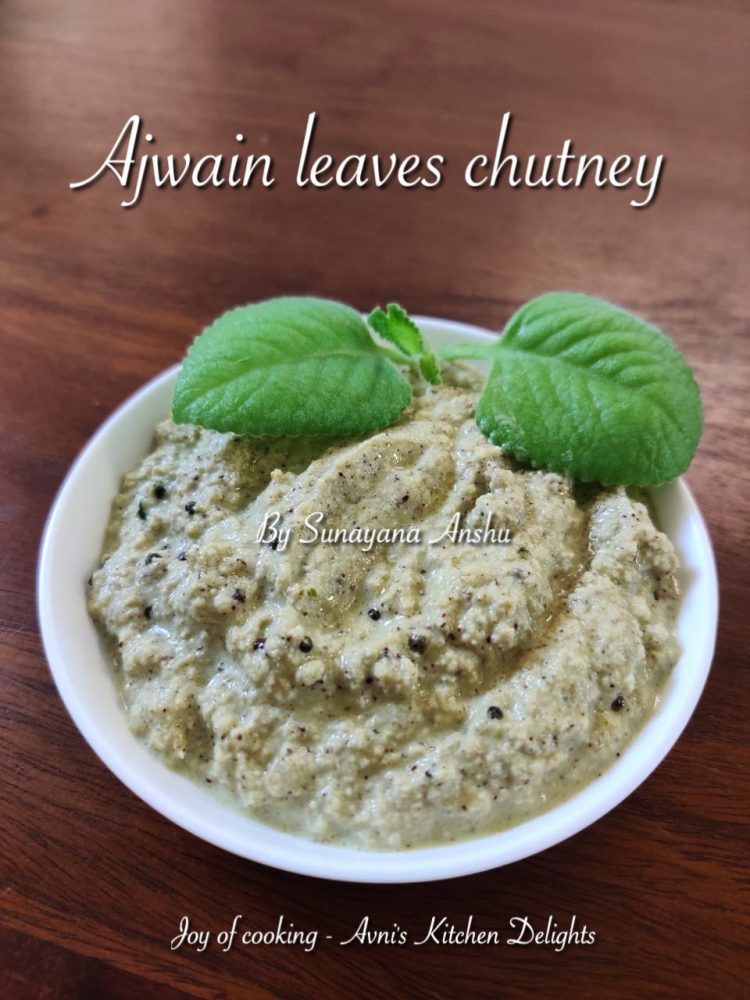
We would trying this at home. Ajwain leaf has been an under estimated plant I think. Glad to have found an article
Thank you, do try out this recipe.